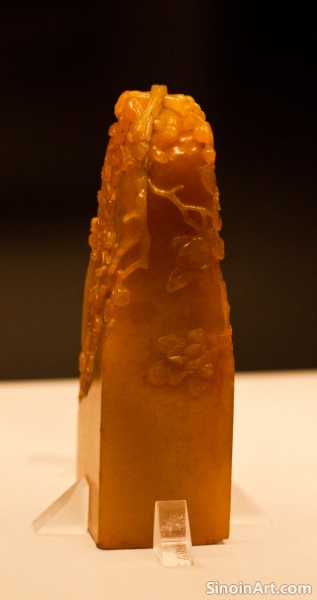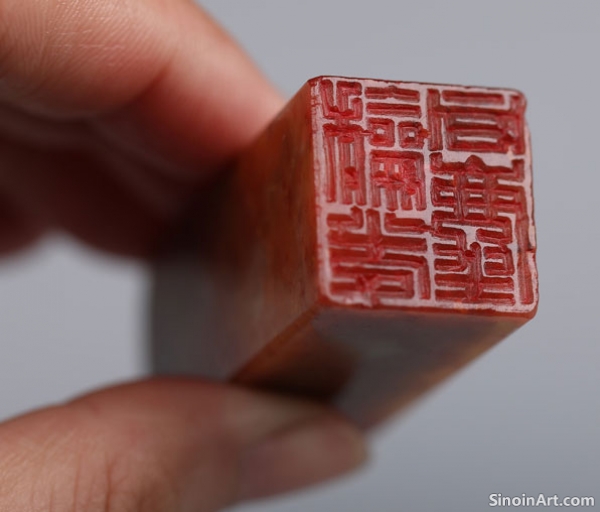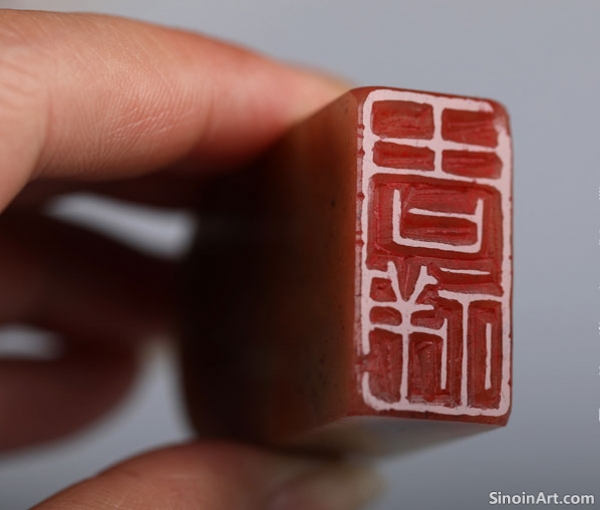The Historical Evolution of Name Seals: From Ancient Origins to Modern Practice
|
The history of Chinese name seals is a long and fascinating one, spanning thousands of years and evolving alongside the cultural and political landscape of China. From their early beginnings as simple identifiers to their current status as artistic and personal expressions, name seals have undergone significant transformations, reflecting the changing needs and values of Chinese society. The history of seal carving is long and complex, reflecting changes in the Chinese society.  The earliest seals, dating back to the Shang Dynasty, were simple in design and primarily used for authentication. Made of bronze or bone, these seals often featured rudimentary characters and patterns. During the Zhou Dynasty, seals became more elaborate, with the emergence of various regional styles. The Qin Dynasty saw the standardization of seal script and the introduction of jade and stone for seal construction. Standardization of seal scripts occurred during the Qin dynasty.  The Han Dynasty witnessed the widespread adoption of seals by government officials and scholars, with seals becoming a symbol of rank and authority. During the Tang Dynasty, seal art began to flourish, with calligraphers and artists creating increasingly intricate and beautiful seal designs. Each dynasty brought its own contributions to the art of seal carving.  The Song Dynasty saw a move towards simpler designs, with a focus on the elegance and refinement of seal script. The Yuan Dynasty saw the emergence of many different artistic styles. During the Ming and Qing Dynasties, seal carving reached new heights of technical sophistication and artistic expression, with master seal carvers creating works of exceptional beauty and complexity. The techniques and styles of carving continued to evolve through the centuries. Despite the passage of time, the art of name seal carving continues to thrive today. Many contemporary artists and craftspeople are dedicated to preserving and innovating in this ancient art form. Modern practitioners draw inspiration from the rich history of seal carving while also incorporating new materials and techniques, ensuring that this tradition remains a vibrant and relevant part of Chinese culture. The art continues to adapt, and is still a relevant part of modern Chinese art. |
Tag : History of Chinese Seals, Seal Evolution, Ancient Seals, Modern Zhuanke, Seal Development
Related information
- The Mark of the Collector
- Layout and Composition: The Artistic Arrangement of Name Seals
- Seal Carving in Painting and Calligraphy: A Finishing Touch
- Techniques of Chinese Seal Carving: A Hands-On Art
- The Interplay of Calligraphy and Seal Carving: A Unified Art
Collector's seals, or shoucang yinzhang, are distinctive marks of ownership and connoisseurship used by collectors of art, books, and other valuable objects in China. These seals are more than just ownership markers; they are also expressions of personal taste, aesthetic values, and engagement with the piece being marked. The seals help to identify who has collected the object, and what they thought of its merit.
This article discusses the principles of layout and composition in name seal carving, examining how the arrangement of characters, use of space, and overall design contribute to the seal's aesthetic harmony.
This article explores the use of Chinese seals as a finishing touch in painting and calligraphy, emphasizing their role in composition, authentication, contrast, and expressing symbolic meaning.
Learn about the intricate techniques of Chinese seal carving. Explore the process, from design to carving, and discover different methods such as zhuwen and baiwen.
This article explores the intertwined relationship between Chinese calligraphy and seal carving, highlighting how calligraphy serves as the foundation for seal designs and how the two art forms complement each other.